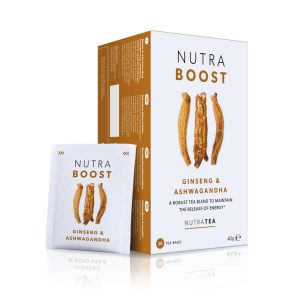SLEEP & RELAXATION IMMUNITY & ANTIOXIDANT VITALITY & INFLAMMATION ANTIOXIDANT & DIGESTION ENERGY & CLARITY WELLNESS & BLOOD SUGAR RESPIRATORY & IMMUNITY PREMIUM & FLAGSHIP BLENDS FLAGSHIP TEAS PREMIUM BLENDS PREMIUM & FLAGSHIP BLENDS PREMIUM & FLAGSHIP BLENDS PREMIUM BLENDS TEA MUGS, CADDY & BUDDY
How to Beat the Mid-Afternoon Slump

Finding it hard to focus after lunch? When a nap isn’t an option, here are some practical tips to help you beat the mid-afternoon slump.
—
There’s something about that patch between lunch and the end of the workday that can really drag. You might have had a fantastically productive morning, ticking things off your to-do list and feeling engaged and interested in what you’re doing. But then 2pm rolls around and you’re struggling to keep your eyes open.
Lovely though it would be to just take a quick nap when the mid-afternoon slump hits, that’s not a practical solution for most of us. Bosses tend to frown on people sleeping at their desks, and even those of us who work from home need to get stuff done during the afternoons.
Of course, if a power nap is an option for you, there’s no reason not to take it. Sadly, the rest of us need to come up with some alternatives to help us keep our focus and energy levels up during those long afternoon hours.
We’ve pulled together 5 practical tips to help you beat the mid-afternoon slump. Next time you’re feeling sluggish and distracted, try one (or all) of these to regain your motivation and have a productive afternoon.
1. Plan Your Work
It turns out that struggling to stay focused in the afternoon is all part of our natural circadian rhythms. And while there are things you can do to boost your energy, there might be times when you’re better off working with your body’s natural patterns.
For example, you might tackle the tasks that need your attention and focus in the morning, when your energy levels are higher, and save simpler, routine tasks for the afternoon.
Alternatively, you could consider what tasks make you feel most interested and energised, then use them to help you stay motivated during the mid-afternoon slump. Collaborating with others often gives us an energy boost, so you might agree with colleagues that you’ll spend your afternoon working together on a project.
Plus, it is harder to drift off when you have other people around to notice your attention wandering.
Spend some time noticing your regular energy patterns and how they change throughout the day. When you have some idea of your normal rhythm, try to plan your work accordingly.
Of course, we don’t always have the luxury of working to our natural rhythms. So, there are some other things you can try to raise your energy in the afternoons.
2. Eat a Lighter Lunch
After a large meal, most of us just want to curl up and take a nap. From a biological point of view, this is completely natural – our bodies need to concentrate on digesting the food we’ve just eaten, so we get the urge to stay still.
There are also some foods that are more likely to make us drowsy than others. These are foods that contain tryptophan, a type of amino acid that our bodies use to make the neurotransmitter, serotonin.
Often associated with mood, serotonin also plays an essential role in sleep. When our serotonin levels are higher, we’re more likely to feel drowsy.
Turkey is the classic food associated with tryptophan, which is one of the reasons Christmas dinners can leave us feeling sluggish. But it isn’t alone in having high levels of this amino acid, which tends to occur in high protein foods, including eggs, spinach, salmon, and dairy.
Eating lots of carbohydrates can also lead to drowsiness. Although they don’t contain tryptophan themselves, carb-rich foods do increase our insulin levels. This in turn increases how efficiently tryptophan is transported across the blood-brain barrier.
All this means that eating carbohydrate or protein-heavy lunches can increase that feeling of sluggishness associated with the mid-afternoon slump. Try a lighter lunch and a more nutritious breakfast instead.
3. Get Moving
Exercise might leave our muscles feeling tired, but it can also help to give our brains the boost of energy we need to make it through the afternoon.
According to one study, even just walking up and down some stairs for ten minutes can be more effective than caffeine at helping us feel energised. So, you don’t necessarily need to be a gym bunny to get the benefits – low-to-moderate exercise is enough.
Getting moving has the added benefit of giving us a change of scene, which can alleviate the boredom of spending all day sitting at a desk. It is a great opportunity to stretch out your muscles and get rid of any stiffness.
Ideally, take your movement break outdoors. Being outside in nature is another way to boost your energy levels and help you feel more alert and engaged. 20 minutes a day is all you need to notice a positive effect on your vitality.
4. Take Plenty of Breaks
Our brains aren’t designed to focus on one activity for long periods of time. So, if you feel your attention drifting, it might be a sign that you need to take more breaks.
Taking short breaks during the afternoon can help to increase your engagement levels and make it easier for you to focus on your work. One popular productivity method that makes use of this effect is called the Pomodoro Technique.
This time management strategy involves organising your work into 25-minute chunks called pomodoros. After each pomodoro, take a five-minute break. Once you’ve done four pomodoros, take a longer break of 15-30 minutes.
This strategy means you never need to focus for too long, and you are never too far from your next break. All of which can help you keep your motivation and engagement up, even during the mid-afternoon slump.
5. Switch Up What’s in Your Mug
When you’re feeling tired and distracted, it’s tempting to turn to coffee to give you the caffeine boost you need to find your focus again. But there are other options to try that might give you back the energy and alertness you need.
Some herbs are known to boost mental clarity, increase alertness, and improve our energy levels. Popular options include ginseng, ashwagandha, astragalus, and gotu kola.
There are also alternative sources of caffeine to look out for, especially if coffee in the afternoon leaves you unable to sleep at night.
Green tea, for example, contains caffeine but also has high levels of L-theanine, a compound that helps us to relax and find calm. The two together are said to give a more sustained energy boost, without the jitteriness of coffee.
For us, the best tea to get through the mid-afternoon slump is NutraBoost, our energy tea. It combines green tea with herbs like ginseng and ashwagandha and is designed to boost mental clarity and alertness, while also reducing stress. Perfect for helping you feel motivated again during those long afternoons.

